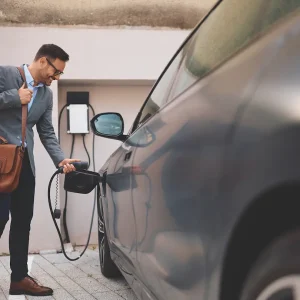There are several ways to reduce your fleet’s fuel bill, but here BusinessCar does the real-world maths on three methods you might not have considered.
2. Use cruise?
If you have ever attended an eco-driving course, one habit they recommend is using cruise control where conditions are appropriate.
This is because a constant speed means less fuel used. Or to put it another way, if you keep slowing down, you’ll need to keep accelerating, and accelerating uses more fuel than a constant speed.
If cruise control isn’t fitted, the recommendation to keep a constant speed still holds; it’s just harder to maintain the level of concentration needed to do this manually.
To quantify what affect cruise control has on fuel consumption, BusinessCar compared it against our own ability to hold a constant speed.
For the test we carried out four 54-mile runs on the M40 and four 40-mile trips on the M25, when conditions, such as traffic and weather were similar, using the same stretches each time. All the runs were at 70mph in a Subaru Legacy diesel and the fuel figures were taken from the trip computer.
As you can see from the calculations in the table (below), despite trying our hardest to maintain a constant speed on the manual runs we were 13.7% less efficient than cruise control, which equates to a 1.13p per mile saving by using cruise.
While this sounds quite a saving, you have to remember that not all journeys are cruise control-friendly. But a driver clocking up lots of motorway miles, may recoup the option cost of the technology (if it’s not already standard) within year one, and certainly over a typical three-year 60,000 mile term.
|
||||||||||||||||||
3. Reduce speed?
Do you know what speed your drivers cruise at on the motorway? And do you know what not knowing is doing for your company’s fuel bills?
According to Department for Transport statistics, the average speed for cars on UK motorways is 70mph, and it’s a safe bet to say that weekend pootlers aren’t the ones above the average. The DfT’s figures also reveal that 54% of cars drive at 70 or above, while 18% are more than 10mph over the limit. Which means despite all the duty of care, climate change and financial warnings, it’s fair to assume a large percentage of business drivers aren’t sticking to the speed limit.
And, putting aside environmental and duty of care issues, that will be having a financial impact on your company.
To see what difference speed makes to real-world fuel economy, BusinessCar took our long-term Audi TT TDI diesel on three round trips along the same 30-mile stretch of near-deserted French motorway, at cruise-controlled speeds of 60, 70 and 80mph.
We had to take the trip across the channel (with thanks to P&O Ferries) because the 130km/h (81mph) speed limit on France’s autoroutes enabled us to drive above the UK’s speed limit. Of course, driving over 70mph is not to be encouraged in this country, but we’re being realistic and accepting that the statistics tell us that it happens.
As you’ll see from the table (below), the differences were impressive, with a run at 60mph using 20% less fuel than the one at 80mph.
Settle down to 60mph and your driver could save 4.5 litres of fuel at something in the region of a pound per litre for diesel over a 300-mile round trip. However, there is cost in terms of time to be considered, as they’ll spend an extra hour and a quarter on the road.
The compromise, a rigid 70mph, will see drivers shave off almost three quarters of an hour compared to travelling at 60mph, but, according to our figures, they’ll also save two litres of fuel, and therefore something in the region of £2 every 300 miles.
Do the maths across the motorway percentage of your drivers’ journeys multiplied by 60,000 miles and convincing them to ease off to 70mph could be a chat worth having, especially for the ones claiming Approved Mileage Allowance Payments for taking their own car on work business. Make your drivers see the benefit, and once you’ve factored in wear and tear, duty of care and driver stress level factors, everybody could be a winner.
Especially with the recession climate, fleet managers need to be increasingly creative with solutions, and these three tests conclusively prove there are many, many ways of trimming fuel bills and therefore emissions. Beyond tracking, fuel cards and other traditional measures, there is always more that can be done.
|
|||||||||||||||||||||||||





